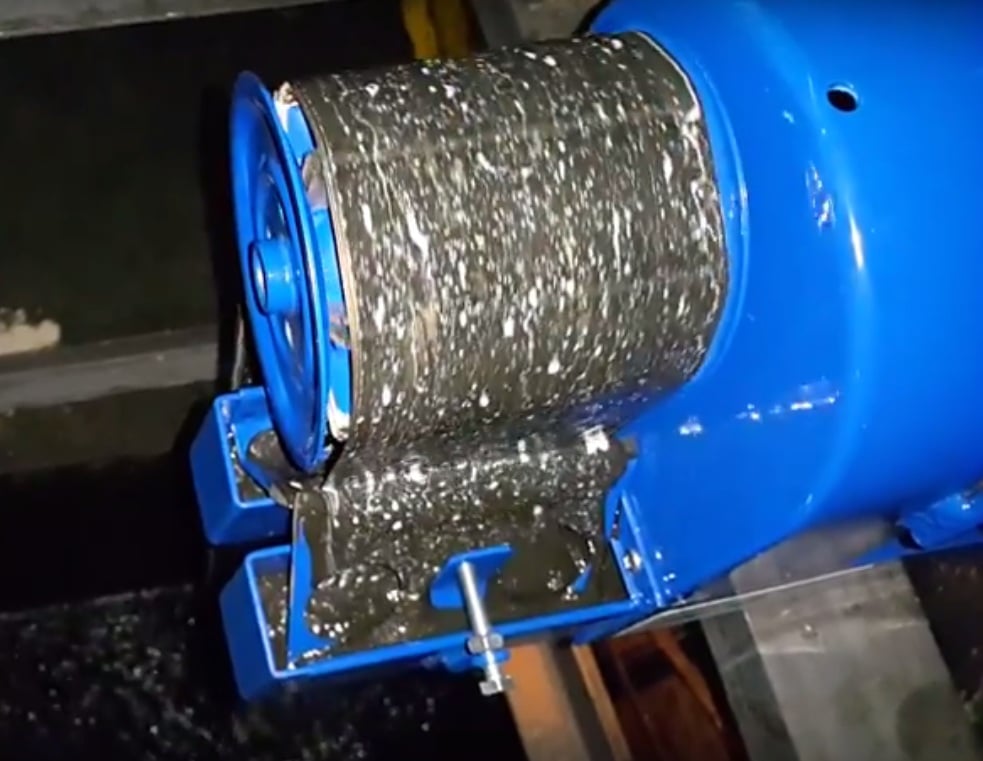Waste oil recovery is a critical part of any industrial operation, from metalworking and machining to wastewater treatment and food processing. Oil contamination in coolants, wash water, or sump pits can lead to increased operating costs, foul odors, premature equipment failure, and even regulatory violations.
Fortunately, there's a simple and effective solution: oil skimmers.
These straightforward devices efficiently remove floating oils from water or coolant, offering both environmental and financial benefits. But just how efficient are they—and what kind of results can you really expect?
⚠️ Why Waste Oil Recovery Matters
Recovering used oil is about more than just good housekeeping. It’s a vital step toward:
- Regulatory compliance
- Environmental stewardship
- Cost reduction
- Operational efficiency
Oil that accumulates on the surface of coolant tanks or wastewater systems doesn't just sit there harmlessly. It fosters bacterial growth, contributes to foul odors, interferes with filtration, and shortens the life of both coolant and cutting tools. More importantly, discharging oil-contaminated water can lead to steep fines or legal consequences under environmental regulations.
Check out our Oil Skimming Guide to learn more.
When companies take the time to properly remove and manage waste oil, they’re not only protecting their operations—they’re also improving safety, cleanliness, and sustainability.
💡 What Makes an Oil Skimmer Efficient?
An oil skimmer is a mechanical device designed to continuously remove oil that floats on the surface of water or coolant. Whether it uses a belt, tube, disk, or drum, the goal is the same: attract and collect surface oils with minimal water carryover.
The efficiency of a skimmer depends on several key factors:
- Oil recovery rate (typically measured in gallons per hour)
- Oil-to-water pickup ratio
- Ease of use and maintenance
- Durability in harsh environments
Well-designed skimmers can operate 24/7 with minimal maintenance, often removing several gallons of oil per hour. Over days or weeks, that adds up to a significant volume of recovered waste oil—and a huge reduction in disposal costs.
✅ 7 Key Benefits of Using an Oil Skimmer
Here’s why an oil skimmer is one of the most efficient, cost-effective tools you can add to your operation:
- 🧾 Reduced Disposal Costs
Disposing of coolant contaminated with oil is far more expensive than disposing of oil alone. Skimming the oil reduces the volume of hazardous waste, which significantly cuts disposal expenses.
- ♻️ Oil Recycling Opportunities
Recovered oil can sometimes be reused in other areas of your operation, or even sold for recycling—creating a small but meaningful revenue stream from what would otherwise be waste.
- 💧 Extended Coolant Life
Tramp oil speeds up coolant degradation. Removing surface oil helps maintain coolant quality longer, meaning fewer fluid changes and less downtime.
- 🌫 Cleaner, Safer Workplace
Oil-contaminated coolant often generates smoke when it contacts hot tools. Skimming removes the oil, reducing smoke and making the work area cleaner and healthier.
- 🔧 Increased Tool and Machine Life
Oil-free coolant lowers bacterial growth and protects machine components from corrosion, resulting in fewer maintenance issues and longer-lasting equipment.
- 📜 Compliance with Environmental Regulations
Skimmers help facilities meet wastewater discharge standards and stay in compliance with EPA or local environmental laws, reducing the risk of fines or operational shutdowns.
- 👃 Improved Hygiene and Odor Control
By removing surface oil, skimmers prevent anaerobic bacteria buildup—eliminating the unpleasant "rotten egg" smell that can develop in coolant tanks or wastewater systems.
⚙️ A Simple Device with Serious Impact
One of the best things about oil skimmers is how simple they are to use. Most models can be mounted directly to the side of a tank or pit and begin working right away. Once installed, they require only routine maintenance like cleaning the collection surface or occasionally replacing a belt or wiper blade.
Their low energy use, minimal operator involvement, and around-the-clock operation make them incredibly efficient over time. In many cases, a single skimmer can replace the need for expensive absorbent materials or chemical treatments—and operate more reliably in the long run.
Oil skimmers may be small, but their benefits are enormous. From reducing environmental risks to improving air quality, extending coolant life, and lowering operational costs, these devices offer a simple solution to a complex and expensive problem.
Whether you run a small machine shop or manage a large manufacturing plant, an oil skimmer is one of the most effective, low-maintenance tools you can add to your operation.
To learn more about oil skimmers, please contact our experts at 440-543-7400 or visit our website: www.abanaki.com
You are just one step away from downloading Abanaki's most detailed resource on our oil skimming equipment. Simply click at the button to get your ultimate guide now.













